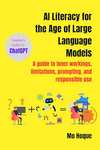
There’s been a lot of talk about artificial intelligence (AI), especially generative AI (GenAI). But the question remains: is this the year GenAI transitions from an emerging technology to a mainstream powerhouse?
Recent trends provide a telling preview. In 2023, one-third of companies were using GenAI in at least one business function, with predictions for meaningful changes in the workforce moving into 2024. This adoption is not just a fleeting trend but a harbinger of significant workforce transformation as we delve deeper into 2024. The trajectory suggests that GenAI is not just expanding its reach but is becoming an intrinsic part of our technological norm.
The undeniable shift in the global content and language industry, driven by the rapid evolution of AI, sets the stage for significant changes. Here are six key areas where AI and GenAI are anticipated to become integral solutions for addressing the diverse and complex multilingual challenges faced by our clients.
Content Development Moves Upstream
LLM-enabled assistants in tools like Microsoft Office (Copilot), Hubspot, Canva, and WordPress will shift the multilingual content generation process and lead to a massive increase in content volume produced.
This will impact the overall localization and translation process, as language variants will be produced from source, giving more emphasis on content validation of AI output, i.e., accuracy, than actual translation. Other activities, such as automatic transcription and AI-generated summaries, will also provide a more efficient workflow for content.
Furthermore, the use of LLM-enabled assistants in content generation will facilitate more personalized and targeted content. By understanding and adapting to linguistic nuances and cultural contexts, these tools can help create more engaging and relevant content for diverse audiences. This not only enhances user engagement but also builds a stronger global presence for brands and organizations.
Retaining the Human Touch in AI-Driven Environments
While AI continues to transform various industries, it isn’t a replacement for human intelligence; rather, it complements and augments it. In the translation and language industry, the advent of AI, particularly in machine MT and neural MT, is reshaping roles but not eliminating the human element.
The shift we’re witnessing is not just from traditional source-to-target translation but towards a nuanced role that centers around validating and refining AI output. This involves assessing whether AI-generated translations are not only accurate but also contextually relevant, culturally appropriate, and stylistically consistent. The human expertise in understanding linguistic nuances, cultural contexts, and intended messaging remains irreplaceable.
For years, linguists have fine-tuned and enhanced machine-generated translations. This isn’t a new concept for the language industry, which has been leveraging AI for decades. However, the sophistication of today’s AI tools calls for an even more skilled human touch.
As AI technologies continue to evolve, the role of human linguists is also expanding into areas of quality assurance, AI training, and even ethical considerations of language use.
The human contribution in this domain also extends to training AI systems. Linguists play a critical role in creating and curating datasets that AI systems learn from, ensuring they are diverse, unbiased, and representative of real-world language use.
In conclusion, as we move further into the era of AI-driven language services, the value of human insight, empathy, and cultural understanding becomes more prominent. AI may be able to translate words, but it is the human linguists who ensure those words convey the right meaning, tone, and impact. This symbiotic relationship between AI and human expertise is not just preserving but elevating the quality and effectiveness of language services in a globalized world.
Ongoing Analysis of MT vs LLM Performance
A better understanding of how MT performs compared to large language models is another area that will continue into 2024. So far, MT still outperforms LLMs, but this will shift over time. Higher-quality LLM output will eventually result in improved accessibility to quality translation and potentially lead to the shift and evolution of NMT to LLM for multilingual content.
The potential for this transition is vast, with LLMs offering a deeper understanding of linguistic subtleties and cultural nuances. Their ability to grasp and generate more complex and varied sentence structures, idioms, and expressions is rapidly improving, which could lead to more natural and effective translations. As LLMs become more adept at handling diverse languages and dialects, their adoption of multilingual content generation and translation services is anticipated to increase.
In addition, the integration of LLMs into neural machine translation (NMT) systems represents a significant advancement in the field. This integration could lead to the development of more sophisticated, hybrid models that combine the strengths of both MT and LLM technologies, offering unprecedented accuracy and fluency in translations. These developments are not only important for content creators and translators but also have the potential to bridge communication gaps on a global scale, fostering better understanding and collaboration across different languages and cultures.
Deepening of AI Ethics and Governance Conversations
In 2024, companies and data organizations are actively committed to ensuring the safety and responsible use of AI, including GenAI. Issues such as bias, factual accuracy, toxicity, and adherence to privacy regulations are of utmost concern.
Recognizing the significance of ethical AI deployment, industry leaders are taking concrete steps to mitigate biases and enhance diversity in AI-generated output. They are investing in comprehensive data collection and curation processes to create more representative training datasets.
Additionally, companies are implementing stringent evaluation protocols to assess and reduce biases in AI models. Ethical AI guidelines and best practices are being adopted industry-wide to prioritize fairness and accountability, ultimately fostering AI systems that produce diverse, responsible, and equitable results, setting a promising trajectory for AI development and utilization in the years to come.
Client perception of AI, influenced by media coverage and personal experiences with AI technologies, will play a critical role in the adoption of GenAI. Discussions around the societal impacts, including ethical considerations and the future of employment, will become increasingly prominent.
Advancement of Vendors in the AI Value Chain
Businesses like Open.AI, AWS, Microsoft, Google, IBM, and Meta will continue to develop and invest in AI and, therefore, gain ground in the AI value chain. The release of ChatGPT in November 2022 changed how we think about AI and content development, allowing the average person to write anything.
It triggered discussion and some alarm bells about authenticity, copyright, and the ethics of using an AI model to create content. It showed us how powerful a product release from these mega-tech companies can be. Key players in the AI tools markets are incredibly influential and can create seismic shifts in how we do things.
Their platforms are becoming more user-friendly and affordable, allowing small businesses and individual developers to leverage powerful AI tools. This democratization is expected to spur innovation, as diverse sectors can harness AI for bespoke solutions, from optimizing operations to enhancing customer experiences.
Keeping an eye on key AI players and implementing tools to streamline our and our clients’ workflows, will be important.
Read more insights here from Welocalize, Adobe, and Microsoft experts on the potential of AI in content creation.
Increase in AI-as-a-Service (AIaaS)
In 2024, we are likely to witness a significant rise in AI-as-a-Service (AIaaS) offerings, a trend that promises to reshape how businesses of all sizes engage with artificial intelligence technologies. Companies, especially those without extensive in-house AI expertise or resources, will find AIaaS an invaluable tool in leveraging the power of AI to enhance their operations and competitive edge.
AIaaS providers will offer a range of services, from machine learning algorithms to NLP and computer vision capabilities, all accessible via cloud-based platforms. As AIaaS grows, we expect to see a proliferation of innovative AI applications across various sectors, including language services, healthcare, finance, and manufacturing.
Furthermore, AIaaS will likely spur new collaborations and partnerships between AI service providers and businesses, leading to a more interconnected and synergistic commercial ecosystem. The potential for customized AI solutions tailored to specific industry needs will also rise, providing businesses with more targeted and effective AI tools.
By making AI more accessible, affordable, and adaptable, AIaaS is set to unlock a wealth of opportunities for businesses, driving innovation and growth across multiple industries.
A Final Note…
GenAI is not just an emerging technology, but a transformative force poised to redefine how we interact with machines, process information, and approach problem-solving across industries. The integration of GenAI into various business functions and the evolution of AI from a specialized tool to a ubiquitous presence in our daily lives are not mere possibilities but near certainties.
The implications of this AI revolution are vast and varied. From content development to language translation, from maintaining the crucial human touch in AI applications to the ongoing analysis of AI model performance, each aspect reflects a facet of the monumental shift that GenAI is bringing about.
The deepening of conversations around AI ethics and governance, alongside the increasing prominence of AI vendors in the technology value chain, underscores the growing maturity and sophistication of this field. Moreover, the rise of AIaaS marks a pivotal shift in making advanced AI technologies accessible and affordable.
The question is not if GenAI will go mainstream in 2024, but rather how swiftly and profoundly it will alter the fabric of our digital and real-world interactions. The future of AI is not just knocking on our doors; it’s already here, reshaping our world in ways we are just beginning to understand and embrace.
In 2024, Welocalize will continue to seamlessly integrate cutting-edge tools tailored to clients’ needs. With unrivaled expertise in GenAI, we unlock its potential by embedding LLMs and forging a new path in content services.




